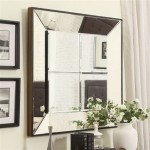How to Mirror iPhone to Computer Without Wi-Fi
Mirroring an iPhone screen to a computer can be highly beneficial for presentations, demonstrations, troubleshooting, or simply enjoying mobile content on a larger display. While Wi-Fi is the most common method for screen mirroring, several alternative approaches facilitate this functionality without relying on a wireless network.
Using a USB Cable and Mirroring Software
Connecting an iPhone to a computer via USB and utilizing dedicated mirroring software offers a reliable and generally lag-free mirroring experience. This method is particularly useful in environments with limited or no Wi-Fi access.
Several reputable third-party applications enable USB mirroring. Researching and selecting a suitable application compatible with the user's operating system (macOS or Windows) and iPhone model is essential. These applications often offer additional features like screen recording and enhanced control options.
The general steps involved are:
- Download and install the chosen mirroring software on the computer.
- Connect the iPhone to the computer using a Lightning cable.
- Launch the mirroring application on the computer.
- Unlock the iPhone and trust the connected computer if prompted.
- The iPhone screen should now be mirrored on the computer display.
Leveraging a Peer-to-Peer Connection
Certain software solutions establish a direct connection between the iPhone and the computer, bypassing the need for a Wi-Fi router. This approach creates a localized network for mirroring purposes, often referred to as ad-hoc or peer-to-peer networking.
This method offers advantages in security and stability, particularly when mirroring sensitive content or working in environments with unreliable Wi-Fi. Choosing software supporting this type of connection is crucial. The specific setup steps vary depending on the software chosen.
Connecting Through Bluetooth (Limited Functionality)
While not a true mirroring solution, Bluetooth offers limited screen sharing functionality for specific purposes. Certain file transfer applications utilize Bluetooth to share files between an iPhone and a computer, sometimes offering a preview of the iPhone's screen within the application interface.
It's important to note that Bluetooth connectivity does not provide full screen mirroring, but rather a limited preview of the device's screen for specific tasks like file transfer. Full screen mirroring for video playback or interactive applications is not typically supported via Bluetooth.
Utilizing a Mobile Hotspot (Technically Involves Wi-Fi)
An iPhone's mobile hotspot feature can create a temporary Wi-Fi network, allowing the computer to connect and utilize traditional Wi-Fi mirroring methods. While technically utilizing Wi-Fi, this method doesn't require an external Wi-Fi router or network.
This approach consumes the iPhone's cellular data and requires a data plan that supports hotspot functionality. It's essential to ensure that the computer's Wi-Fi is enabled and connected to the iPhone's hotspot network.
The general steps involved are:
- Activate the Personal Hotspot feature on the iPhone.
- Connect the computer to the newly created Wi-Fi network.
- Use the computer's built-in mirroring functionality (e.g., AirPlay on macOS) or dedicated mirroring software.
Wired Connection with Adapters and Display Devices
For mirroring to external displays, adapters can create a wired connection between the iPhone and a monitor or projector. These adapters typically connect to the iPhone's Lightning port and output video to HDMI or VGA.
This method provides a direct connection for video output and is particularly suited for presentations or viewing content on a larger screen. However, it doesn't technically mirror the iPhone screen on a computer but directly to an external display.
Considerations for Choosing a Method
Several factors influence the appropriate mirroring method:
- Availability of resources: USB cables, adapters, software.
- Network access and stability: Wi-Fi availability, data plan limitations.
- Required functionality: Full mirroring vs. limited preview, screen recording.
- Security requirements: Sensitive content may necessitate a more secure connection.
- Operating system compatibility: Ensuring software compatibility with macOS or Windows.
Troubleshooting Potential Issues
Several common issues can arise during screen mirroring:
- Software incompatibility: Ensure the mirroring software supports the iPhone model and operating system version.
- Driver issues: Outdated or corrupted drivers on the computer can hinder mirroring functionality.
- Connection problems: Check USB cables, adapters, and network connectivity.
- Firewall restrictions: Ensure firewalls are not blocking the mirroring software or connection.
- Operating System Restrictions: Verify the Operating System allows for software installations and mirroring permissions.
By understanding the various methods available and the considerations involved, users can effectively mirror their iPhone screens to computers without relying on a Wi-Fi network.

Best Ways To Mirror Iphone Pc Via Usb Without Wifi

How To Mirror Iphone Pc With Usb No Wifi Needed

How To Mirror Iphone Mac Without Wi Fi

How To Mirror Iphone Windows Pc Without Wifi Via Usb

How To Mirror Iphone Mac Without Wi Fi

4 Ways How To Mirror Iphone Mac Without Wifi Airdroid

How To Mirror Iphone Windows Pc Laptop Mac Full Guide

Simple Ways To Mirror Iphone Tv Without Wifi 6 Steps

4 Simple Ways To Mirror Phone Screen Without Wifi

Simple Ways To Mirror Iphone Tv Without Wifi 6 Steps








